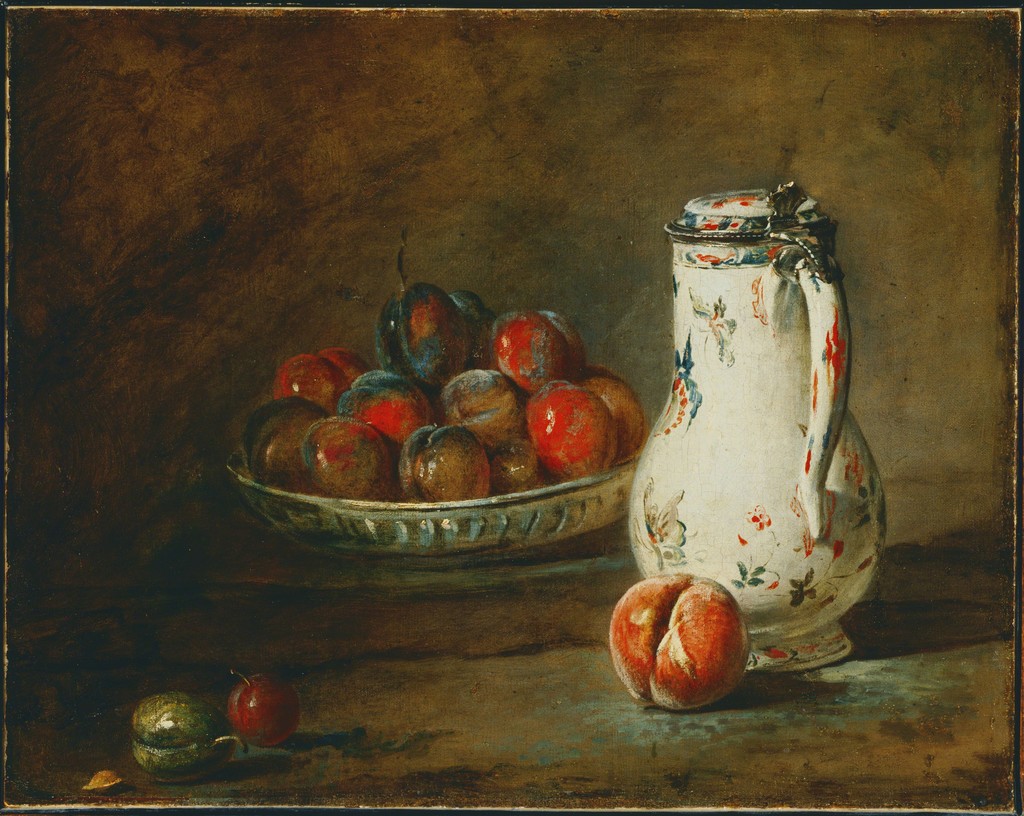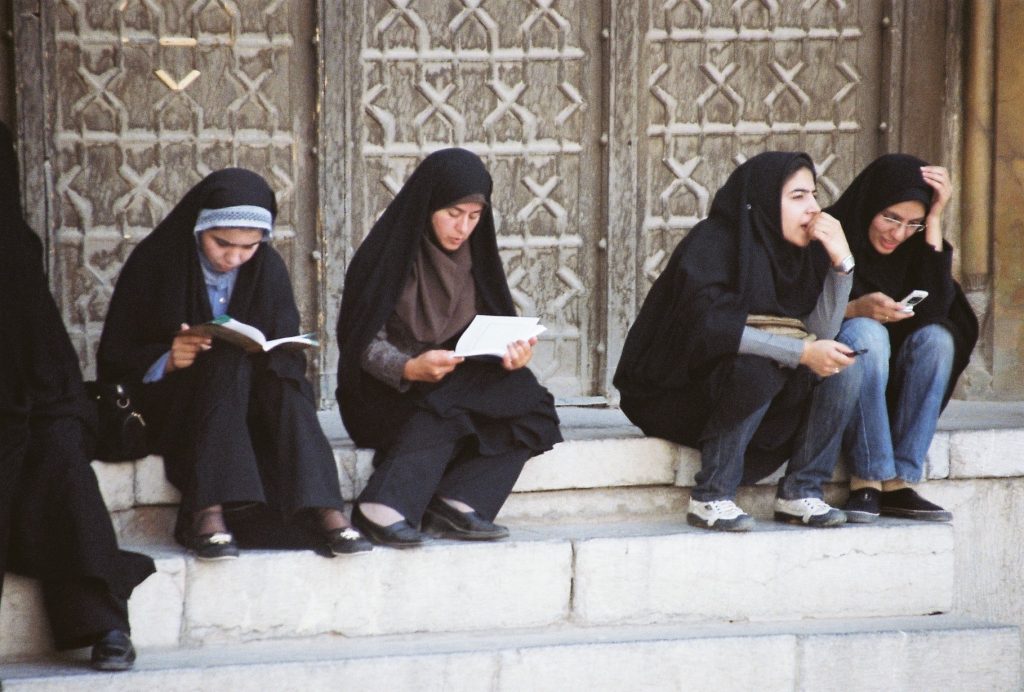“In Praise of the Small,” nonfiction by Natania Rosenfeld, appeared in the Fall 2006 issue of MQR.
Two female painters of my acquaintance have been told that their paintings are too small, and that the combination — female, small — is fatal for their careers. One of these friends committed suicide in her mid-fifties. I won’t say it was because of being told that, but I also won’t say that it wasn’t.
I am going to write in praise of the small. Not the miniature, which is an inverse of the monumental and thus, in its own way, monumental. The miniature has its own celebrants, in awe of the capacity to paint acorn-sized portraits with a one-haired brush, or sculpt turtles the size of a thumbnail with a knife like a needle. I am not talking about such virtuosity, which is just grandiosity writ tiny. I am simply talking about the small.
The common assumption is that if you make something small, it’s because you couldn’t make something large; that the small is only an embryonic version of the grown up, the fully adult. (In the Hebrew language, “to grow up” is synonymous with “to become a man.”) This is literal minded and assumes that the two things are easily distinguishable. Suppose your large is my small, and vice versa? Or suppose your large thing — like Kafka’s The Castle — is unfinished, and your small thing — like “The Judgment” — complete?
I find a completed large thing somewhat frightening. I want large things to be open ended. The large thing that is closed and finished is a juggernaut, a dictatorship, a system with a capital S. It swallows you alive.
I may feel this way in part because of the limitations of my attention. I can’t concentrate on symphonies, and I’m thankful for the natural subdivision of operas into arias, choruses, and so on. The detail commands me, at the expense of the whole; what’s good about this is that the whole, for me, is never completed, because each time I hear or see it, I concentrate on a different detail.
I’m reading Proust right now and have been for the past six months. I am not sure what category Proust fits into. On the one hand, In Search of Lost Time is made up of six volumes of seven hundred plus pages each; on the other, the work is simply a series of set pieces in which each detail is lavishly described. Yet there is an unfinished feeling about the whole. I have been thinking a good deal, incidentally or not, about Proust’s self-hatred. Jews and homosexuals get a bad rap in Proust, although Marcel’s ambivalence is obvious: he loves the very thing he hates, and hates himself for loving it. This may be what makes him a grandiose miniaturist, not small at all.
Perhaps what I am talking about is minorness, as in Deleuze and Guattari’s definition of Kafka’s work as both minor and minority writing. As a member of at least two minorities — Jews, women (we are the smaller sex, after all, and the less respected) — I have never felt in command of my surroundings or firmly planted in any territory. I cast about me for something definite and have trouble finding it.
As noted, I also have an attention problem. This very moment, there are five documents open on my computer; I have been switching among them all evening. Kafka did better than that: he completed “The Judgment” in a night; I don’t think he was switching among documents. During the day, he worked for the insurance company, concerned with workers’ accidents. I think he sometimes doodled in the margins of his legal briefs. I myself doodle obsessively during committee and faculty meetings; afterwards, I think, “These are pretty good; what if I inflated some of them to ten times their size and painted them in color?” Somehow, I never get around to it.
Wayne Koestenbaum points out the etymological similarity of doodle and doodoo in his discussion of drawing as a minor art. My husband once wrote an article about that so-called children’s drama, Alfred Jarry’s Ubu Roi; he discussed the post-infancy prohibition on playing with one’s excrement. Which ties back in to homosexuality. When Proust describes the amazing encounter between the Baron de Charlus and the tailor Jupien, he devotes a distinct attention to the process of washing up that follows anal sex. A biographer of Roger Casement, the Irish rebel who attempted to draw the world’s attention to slavery and genocide in the Congo — Joseph Conrad met him there and deemed him handsome, clever, and weak — says that Casement was uniquely in touch with his anus. It is fear of the receiving end, some argue, that creates imperialists. Casement was executed by the British.
Koestenbaum: “Drawing’s liability to be mere doodle allies it to the excremental as well as to the incomplete, the incomprehensible, the non-citizen, the accident, the throwaway — any entity nobly outside nomenclature, consciousness, responsibility, and marketplace.” James Joyce wrote Ulysses on little pieces of paper he secreted in his clothes; the book is about secretions, as well as what Koestenbaum calls “throwaways.” That very word occurs in Ulysses as a paradigm for the small thing that one person considers unimportant, another, world-shattering. In an encounter on the street, Leopold Bloom refers to the racing sheet he is about to discard as a “throwaway”: his interlocutor dashes off to the nearest bookmaker’s to bet on a horse he thinks is called Throwaway.
Proust was a great admirer of Chardin’s still lifes, a painting genre long considered minor. In Still Life with Oysters and Lemons, his little book inspired by a Chardin at the Met (a small thing inside a huge one), the poet Mark Doty quotes Gaston Bachelard: “Intimacy . . . is the highest value.” In big paintings, I look at the impasto: the scribble. “Damned mob of scribbling women,” Hawthorne infamously wrote; yet, what does anyone ever do but scribble? Or scrabble, like a chipmunk or a squirrel? The world is enormous, life and death are incomprehensible, and we are damned small in proportion to it all. The heroine of Kafka’s world is a singing mouse. The brushstroke builds the painting, and the brushstroke can only be as big as the painter’s own gesture. Is this what it comes down to: that men have bigger arms? Superior upper body strength: the oft-cited basis of patriarchy.
I don’t buy it. Of course, I may just be making excuses for my own little version of A.D.D. My default genre is poetry, most likely because I lose patience or velocity after writing more than a few lines. Next is the essay, because it allows me to meander. This one has already exhausted me, and I’m only on page three.
My friend who committed suicide gave me two still lifes of hers, one of bottles and vases, one of yellow star fruit in a brown bowl. What’s curious about still life is that, though small, the objects in it can be larger than their real-life counterparts. A star fruit that large would be overgrown. Who’s to say what’s big, what’s small? My husband and I went to see the horses at the expensive women’s college the other day. Their heads were larger than our torsos, but the little lasses can mount and control the great creatures. My own theory is that horses, like dogs, who could so easily tear us limb from limb, deign to be controlled by us out of an angelic graciousness — and stupidity. We are small, and yet they consent to our will, God help them.
According to some critics, Kafka’s Josephine the mouse soprano is a Jewish heroine. He describes her song as mere “piping”; it hardly compares with true singing, just as Yiddish could not compare with German or the other “real” languages of Europe. In fact, there is a great literature of Yiddish, mostly in smaller forms like poetry and short stories, as well as a large number of plays. In Proust’s literary world, homosexuals have a language of gesture only they can understand. Thus, they are permanent exiles, like Dreyfusards among virile conservatives. Back we come again to virility. Virility is an overlooking of the detail, a contempt of the small. The small is in exile in this world of Humvees and jumbo jets and their museum versions. Probably the small will always be in exile.
I don’t say that large is bad; if I seem to have said that, I’ve been misunderstood — as is often the case with us minorities, us scrabblers and pipers and lovers of the immediate and fleeting. Blink, and you miss us. Keep your eyes open, and you might see something.
Image: Chardin, Jean-Baptiste Siméon. “A Bowl of Plums.” 1728. Oil on canvas. The Phillips Collection, Washington, D.C.




